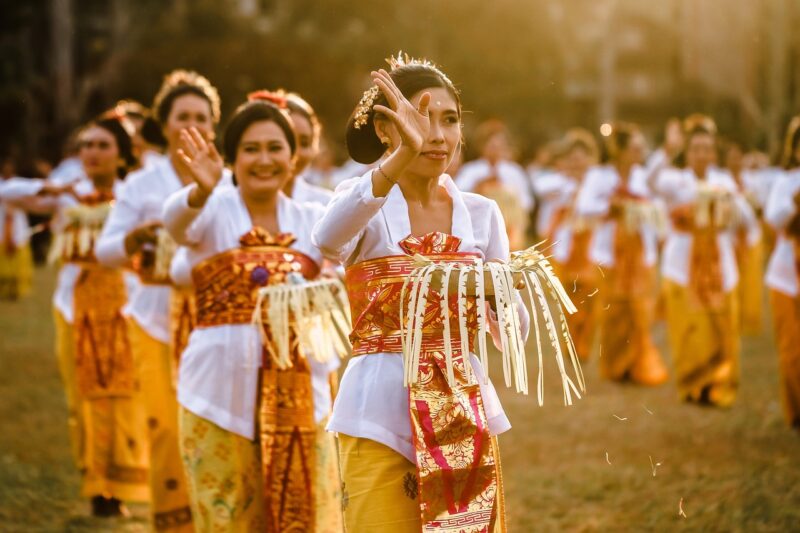How Cultural Traditions Are Preserved in an Increasingly Globalized World
November 16, 2024

In an era characterized by rapid globalization, cultural traditions around the globe face unprecedented challenges and transformations. The blending of cultures, influenced by technology, travel, and communication, raises critical questions about the fate of local customs, languages, and practices. While it can be argued that globalization poses a threat to cultural purity, there are compelling narratives of resilience and adaptation that reveal how cultural traditions can be preserved and celebrated in a global context.
1. Understanding Globalization and Its Impact on Culture
Globalization refers to the interconnectedness of economies, societies, and cultures through trade, travel, and technology. As people increase their interactions across borders, cultural exchanges are accelerated, often leading to what is known as cultural homogenization; this is where dominant cultures overshadow local ones, creating a more uniform world.
However, the impact of globalization is not entirely negative. While some cultures may diminish in visibility, others have found ways to adapt and thrive. This complexity highlights that globalization does not solely erode cultural uniqueness; it can also foster a newfound appreciation and revival of cultural practices as a form of resistance.
2. Grassroots Movements: A Reclamation of Cultural Identity
Many communities are actively pursuing grassroots movements to keep their traditions alive in a globalized environment. Cultural festivals, language preservation initiatives, and community workshops are just a few ways people are reclaiming their heritage. For instance, the revival of traditional arts—such as dance, music, and craftsmanship—has been observed in various places, often motivated by a desire to combat the dilution of identity.
Take the example of indigenous cultures around the world, which have faced significant challenges due to colonialism and globalization. Many tribes today are engaging in cultural education programs, where younger generations learn traditional practices from elders. This creates a sense of pride and continuity, reinforcing their cultural identity in the face of external pressures.
3. The Role of Technology in Cultural Preservation
Contrary to popular belief, technology serves as an essential ally for cultural preservation rather than a detractor. The internet and social media have enabled cultural expressions to reach global audiences, fostering new forms of cultural exchange and immersion. Online platforms allow marginalized voices to share their stories, music, and art with a broader audience.
The documentation of oral histories and ancient traditions through video and audio recordings has become increasingly accessible. For instance, initiatives like the Endangered Languages Project document and archive the languages that are at risk of disappearing. This digital preservation serves as a resource not only for future generations but also helps raise awareness about the importance of cultural diversity.
4. Education as a Tool for Cultural Sustainability
Education plays a vital role in preserving cultural traditions. Schools and educational programs that incorporate local history, languages, and cultural practices empower younger generations to take pride in their heritage. Educational institutions can act as platforms for cultural exchange by including diverse perspectives in their curriculum.
In many regions, bilingual education models have proven successful in sustaining local languages while ensuring students can navigate global contexts. In multi-lingual countries, such as India or Canada, schools celebrate diversity by allowing cultural programs that promote local traditions and languages. By integrating cultural education, societies foster respect for diversity, ensuring that future generations appreciate and continue their cultural legacies.
5. Cultural Tourism: Balancing Preservation and Economic Benefits
Cultural tourism is another avenue through which traditions can be preserved and promoted. Communities across the globe leverage their rich cultural heritage to provide visitors with authentic experiences. However, this must be balanced carefully to avoid the commodification of culture, which can diminish its true essence.
For instance, cities like Kyoto in Japan have developed strict guidelines for cultural tourism that maintain the integrity and authenticity of their traditions, while also benefitting economically from visitors. By promoting local artisans and traditional performances, these communities can share their cultures while ensuring they remain vibrant and respected.
6. The Challenges Ahead: Striking a Balance
Despite the strategies in place for cultural preservation, significant challenges remain. The influence of global advertising, fast fashion, and consumerist culture can undermine local customs. Younger generations often gravitate towards global pop culture, which can divert attention from traditional practices.
It is essential to highlight the importance of cultural advocacy and policy-making that supports local cultures. Governments and organizations must prioritize cultural initiatives and protect intellectual property rights to prevent exploitation by global corporations. These policies can foster an environment where local traditions are not just preserved but also respected and celebrated.
Conclusion: A Harmonious Coexistence
As globalization continues to reshape our world, cultural traditions face both challenges and opportunities. The resilience and adaptability of communities worldwide remind us of the value of cultural diversity. By leveraging technology, grassroots movements, and education, societies can preserve their unique identities amid global changes.
A harmonious coexistence of global cultures is possible, one where local customs are respected and shared on a global stage. As custodians of our heritage, it is imperative to participate actively in preserving our cultural narratives, ensuring they are passed down to future generations, enriching the global cultural tapestry in the process.








